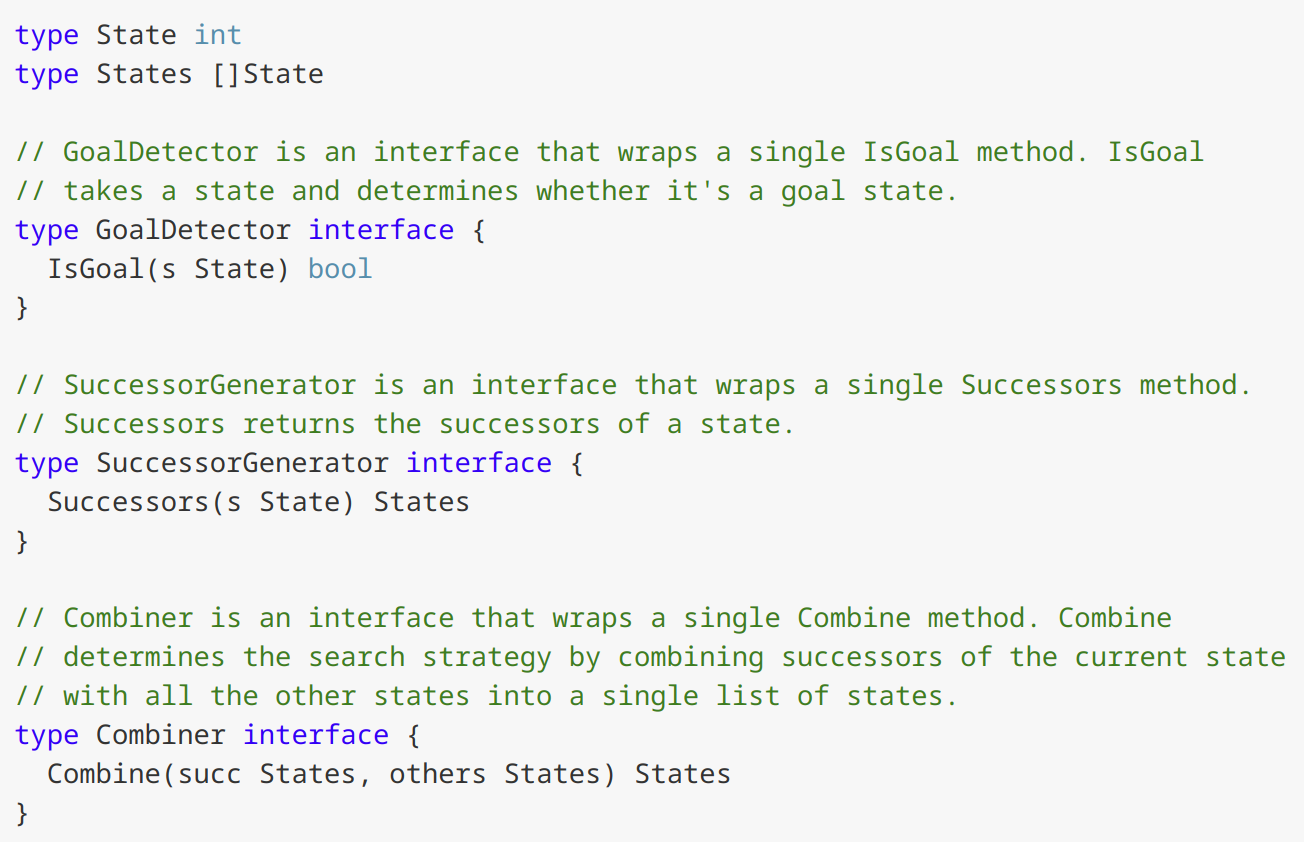
The other day I was pondering the prevalence of single-method interfaces (SMI) in Go, and what makes them so practical and helpful. SMIs have proven to be a very successful software modeling tool for Go programmers, and you find them all over Go code-bases.
I tried to think about the fundamentals, which brought me to some of the earliest roots of our trade: functional programming and higher-order functions (HOF). I discussed some examples of applying higher-order functions in Go recently.
This post will describe how SMIs are a more general and powerful technique than HOFs. It makes the following claims:
- SMIs can do whatever HOFs can
- SMIs are more general
- SMIs are somewhat more verbose for simple cases
To begin, let’s use the same example as before.
The tree search example using SMIs
The previous post demonstrated a Go solution using higher-order functions for the tree search problem described earlier. I encourage you to review the earlier posts to get the most out of this one.
Let’s see how the same task can be accomplished using SMIs instead of HOFs; the full code is on GitHub. Starting with the types:
type State int
type States []State
// GoalDetector is an interface that wraps a single IsGoal method. IsGoal
// takes a state and determines whether it's a goal state.
type GoalDetector interface {
IsGoal(s State) bool
}
// SuccessorGenerator is an interface that wraps a single Successors method.
// Successors returns the successors of a state.
type SuccessorGenerator interface {
Successors(s State) States
}
// Combiner is an interface that wraps a single Combine method. Combine
// determines the search strategy by combining successors of the current state
// with all the other states into a single list of states.
type Combiner interface {
Combine(succ States, others States) States
}
These are the equivalent SMIs to the GoalP, Successors and Combiner function types we’ve seen before; the names are slightly modified to be more suitable for interfaces and their methods.
The tree search itself – using these interfaces – is almost identical to the previous version:
func treeSearch(states States, gd GoalDetector, sg SuccessorGenerator, combiner Combiner) State {
if len(states) == 0 {
return -1
}
first := states[0]
if gd.IsGoal(first) {
return first
} else {
return treeSearch(combiner.Combine(sg.Successors(first), states[1:]), gd, sg, combiner)
}
}
To implement BFS, we reuse prependOthers from the previous post (it remains identical):
And again, appendOthers and implementing DFS:
func bfsTreeSearch(start State, gd GoalDetector, sg SuccessorGenerator) State { return treeSearch(States{start}, gd, sg, CombineFunc(prependOthers)) }

